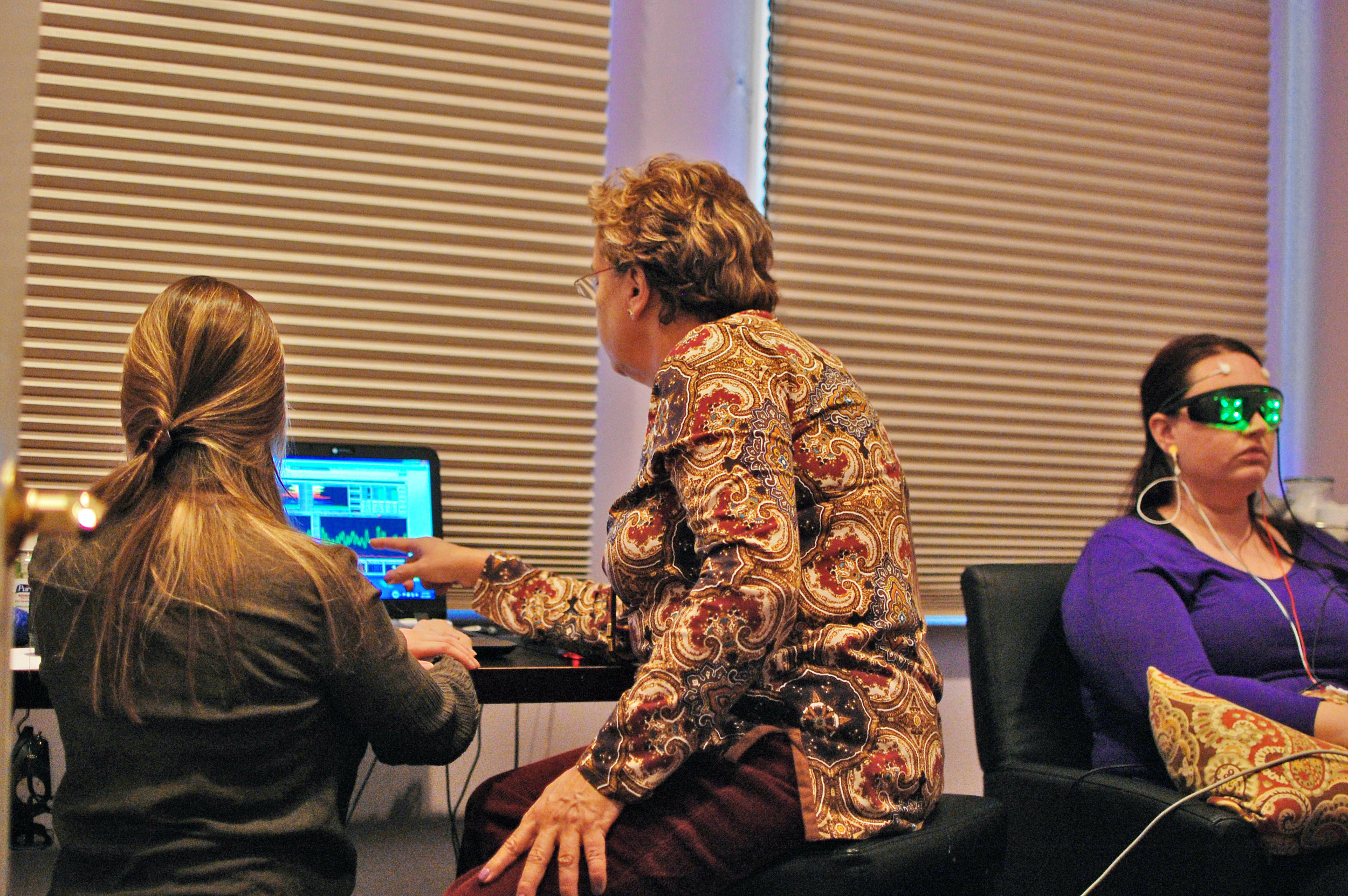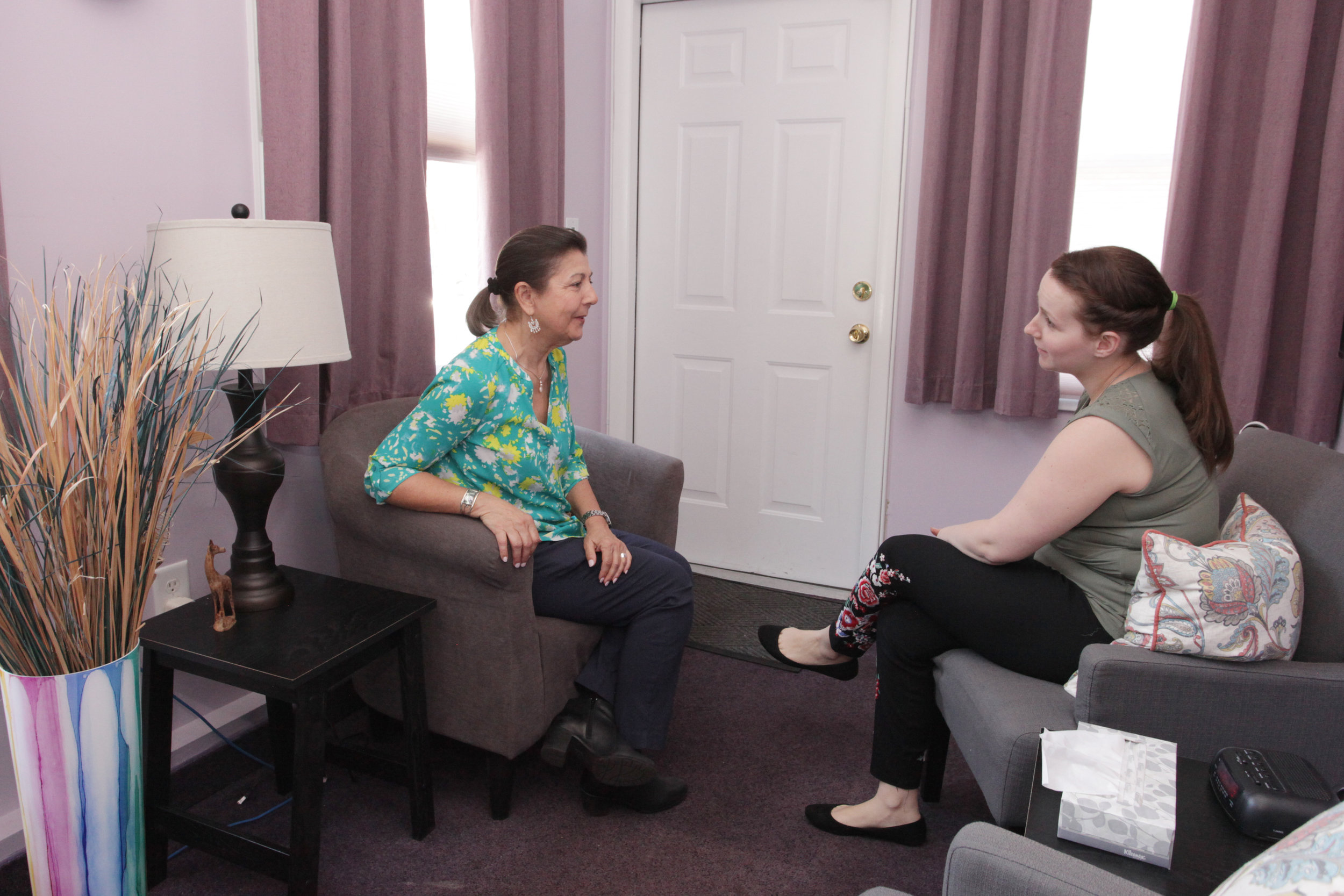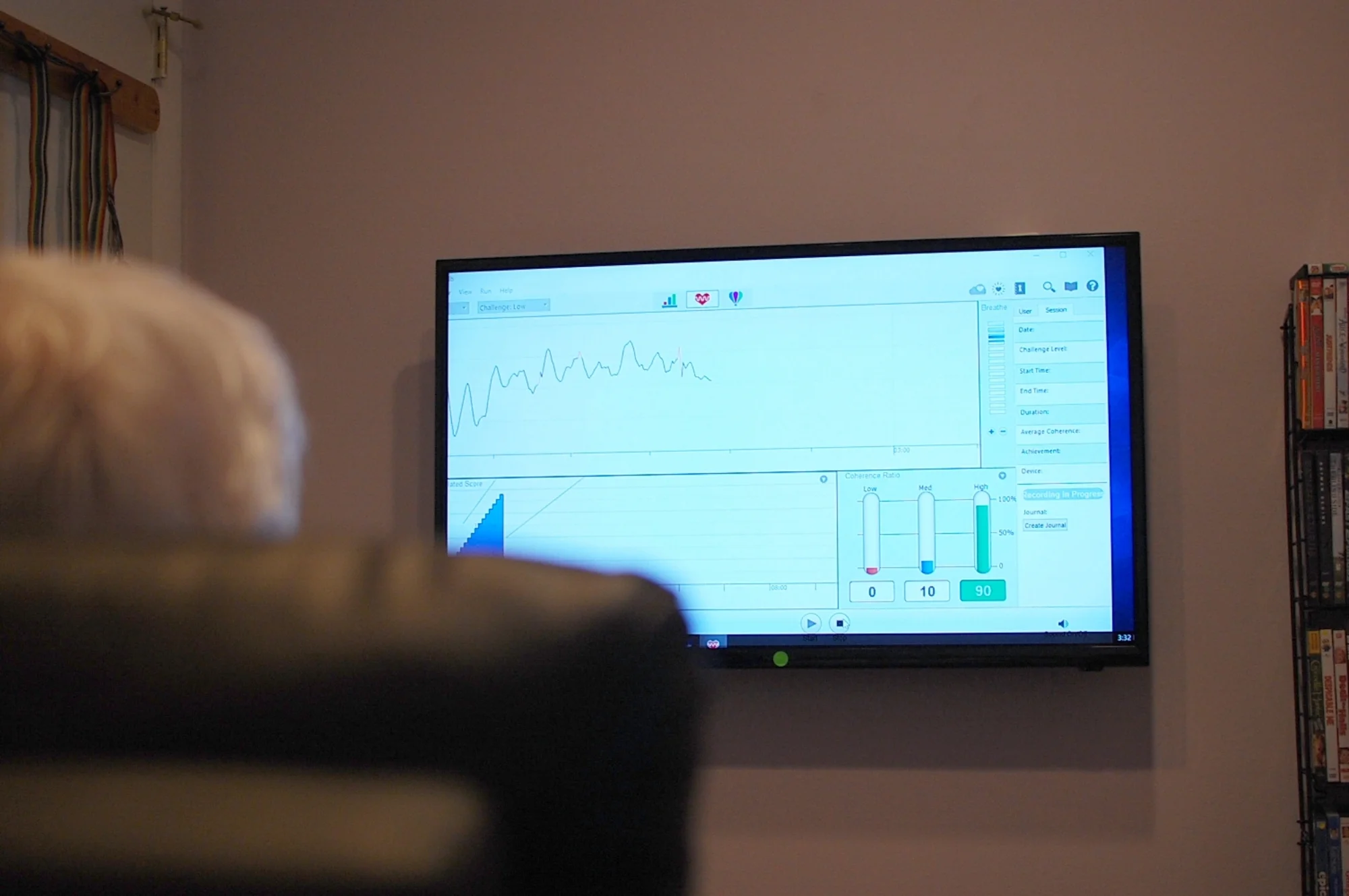How It Works
Neurofeedback
Neurofeedback works by providing immediate, real-time feedback in a method the brain understands. Using repetition and reinforcement, Neurofeedback utilizes the brain’s ability to learn and change, known as neuroplasticity.
The brain is an information engine. There are 10 billion neurons, or nerve cells, operating at the same time to process lots of information. Observing the brain via a qEEG, or quantitative electroencephalogram, shows how the informational patterns work in the different regions of the brain. Some areas are over-energized and some are underpowered. Some sections communicate very efficiently while others can have difficulty sending information from the right to the left side of the brain. Seeing the brain in action, information can be gleaned to explain how and why some life difficulties occur. Some struggles may manifest as depression, anxiety, ADHD, Autism (ASD) or traumatic brain injury patterns. The information from the qEEG also helps determine the best direction to help.
It is possible for the brain to get stuck in poorly functioning patterns. For example, if the brain is locked into a high arousal pattern, it may be difficult to calm down or relax. If the brain is stuck in a low arousal pattern, it can be hard to wake up, be alert or even be motivated.
Neurofeedback is really exercise for the brain. Although the technology is complex, the mechanism of treatment is simple. Neurofeedback works to “coax” the brain into producing more of one type of waveform pattern and less of another type. During a Neurofeedback session, the person watches a movie or listens to music while their brain is monitored. When the brain produces the better pattern, the movie becomes crisper and clearer. When the brain produces the waveform being targeted to decrease, the movie is fuzzy or fading. Overtime, with this immediate feedback, the brain begins to understand the direction of desired change and begins to more frequently create this wave pattern. Along the way, the targeted symptoms begin to diminish or leave all together. The change becomes the brain’s new norm and is the pattern the brain creates moving forward.
Drawings by a 10 year old with ADHD over the course of 3 months of Neurofeedback treatment, via Dr. Bessel van der Kolk
Neurofeedback works with people of all age ranges and differing needs. This technology can be used to help increase performance ability in sports, business or school. Neurofeedback also is very useful to help with focus, attention, anxiety, migraines or depression. Perhaps mood swings or panic attacks want to be eliminated. Or maybe Neurofeedback can be utilized to simply help the brain work more sharply and crisper. Training the brain towards better functioning is always valuable.
Because of the brain’s ability to learn throughout the life cycle, more and more people continue to find Neurofeedback useful. Research is ongoing and continues to validate the effectiveness of this technology. Neurofeedback can help people move toward living a happier, healthier and more productive life.
Photos taken by Jodi Sander
Counseling
A more comprehensive approach to health and wellness combines counseling with Neurofeedback. Talking with family members and clients assists in the change process as Neurofeedback moves the brain into better balance. Grounded in dialogue, psychotherapy provides a supportive environment that promotes openness with someone who is objective, neutral and nonjudgmental. Our counselors are trained professionals who can give information and guide clients to change for the better.
Heart Rate Variability (HRV)
Research has shown that there is a slight variation in each heart beat. This is actually the body’s attempt to provide the needed energy for a task, moment by moment. In effect, HRV shows the impact of stress on the body. When the heart rate is coordinated with the respiratory rhythm, a higher HRV may be obtained. A higher HRV indicates that a person is fit and healthy, while a lower HRV may indicate increased fatigue or stress. By adding HRV training to the Neurofeedback training, the body and the brain work together in better balance.
home training
Is coming to our offices for your appointment less than convenient? We now offer remote neurofeedback so you can get the training you need in your own home!
Recent advancements in technology allow us to monitor your training and see your progress in real time or right afterward. The process is smooth, simple, and you get the same high-quality results as you would in the office. And we’re right there with you—virtually!
Cost-effective. Easy to use. Convenient.
With the prevalence of COVID 19, “home training” makes more sense than ever. We provide you with everything you need to be successful. We’ll guide and follow along with you every step of the way. It’s almost like being in the office with us except that it’s easier on you! Call us now to find out more!









